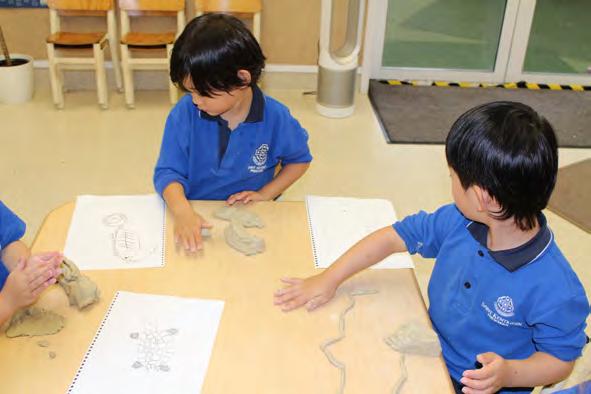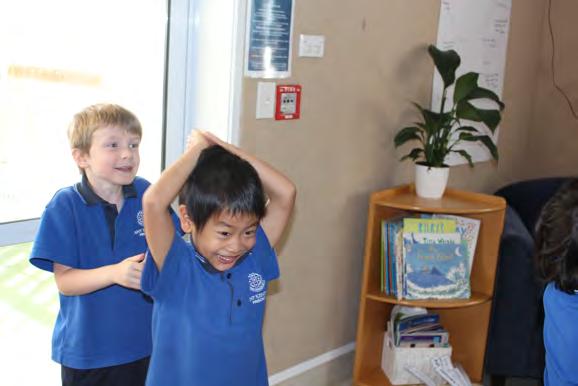
2 minute read
The Wonders of the Sea
Written by: Devon and Eileen
The Kauri children had been passionately exploring ‘The Wonders of the Sea’, inspired by the annual national ‘Sea Week’. Their interest into what lies beneath the beautiful blue sea evolved into a fascinating investigation and sparked a lot of wonder and curiosity for the children. This developing investigation aligned well with our Reggio Emilia-inspired philosophy of purposeful teaching and learning. ‘
The ‘Wonders of the Sea’ offered opportunities for the children to nurture their love of learning, encouraging them to become active researchers and explorers through using many different mediums and their ‘hundred languages’. It also embodies many of our Saint Kentigern values and that of Kaitiakitanga, guardianship and protection of our natural environment. As we embarked on our journey into exploring the wonders of the sea, the children’s strong interest into sea creatures guided us. Taking their lead, we were amazed at their curiosity to know more about the various kai moana (sea creatures) and the way in which they use the hundred languages as tools to research and make their thoughts and ideas visible.
The language of storytelling, role play and imagination had been a widely used by the children. Opportunities for the children to play, imagine, invent and experiment were vital aspects of our curriculum. They loved exploring provocations with construction materials, loose parts and recycled materials to create large scale sea scene creations on our mat. These sea scenes became props in which the children used to inspire their group play, acting out how to care for the sea animals, feeding them and rescuing them – becoming Kaitiaki (guardians of the sea).
The children were encouraged to utilise their role play skills in different ways. A popular experience at Investigation time was to take on the role of a sea creature, and to explore how they moved through the ocean, and even how they slept. This was a great way to enhance gross motor capabilities along with their developing spatial awareness as they moved past each other.
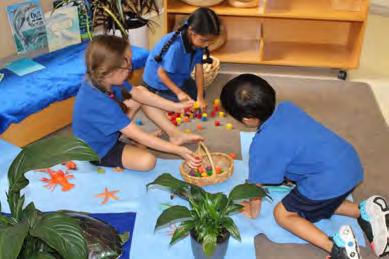
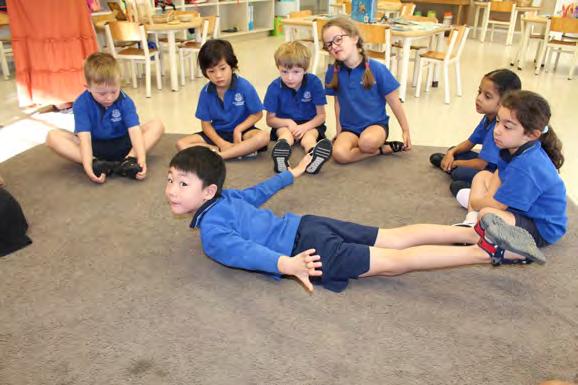
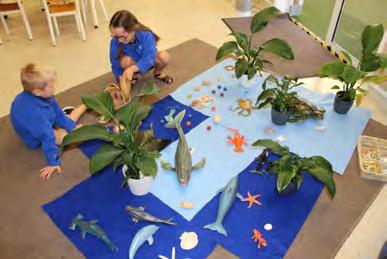
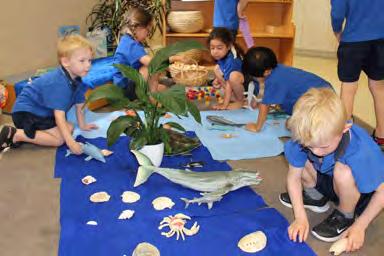
In response to the children’s extended interest into the ‘Wonders of the Sea’ the teachers sought out other ways to challenge the children to make their emerging working theories visible. The children were invited to work on collaborative drawings together. These cooperative efforts became a medium that the children could use to notice anatomical details about a sea creature of interest to them. Drawing is one of our preferred mediums in the Kauri classroom due to it’s potential for fostering early pre-literacy knowledge and skills.
With the children showing a defined preferences for certain sea creatures, it was time to extend them even further. The teachers proposed the idea that the children could use their detailed sea creature drawings as a plan or design for representing their sea creature using clay. The children embraced this challenge; we were so impressed by the children’s capabilities to re-create their drawings so closely in their clay work. Interestingly, how children approached this task shed light on the different types of decision-making that was involved in this process, that is choosing to make a two or three– dimensional representation, how big or small it needed to be and so forth.
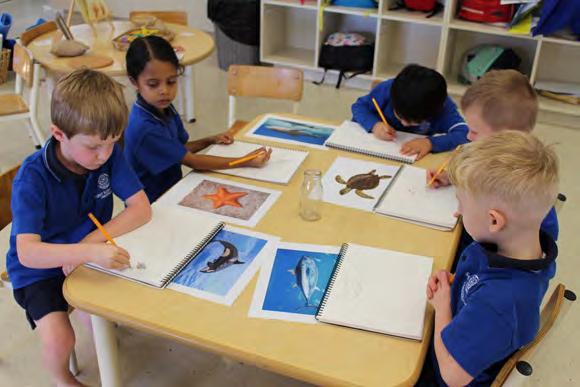

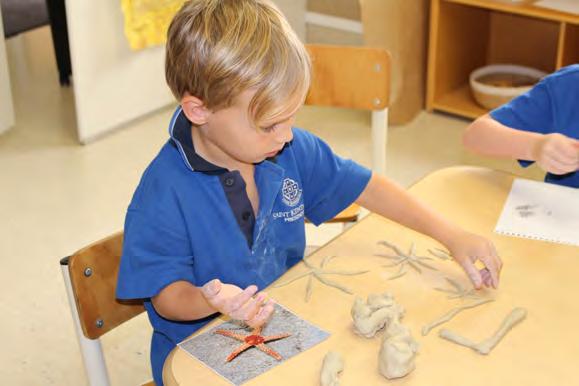
This investigation into the ‘Wonders of the Sea’ highlighted the value of creating a curriculum that is responsive to children’s interests. The children were given the time and space to express their own understandings. Engaging in processes of exploration using various expressive languages lends children opportunities to build on their knowledge about the marine world. The children became proud experts on their respective sea creature, and created work that reflected complexity and pushed them beyond what we collectively though possible in terms of their competencies and skill sets.
